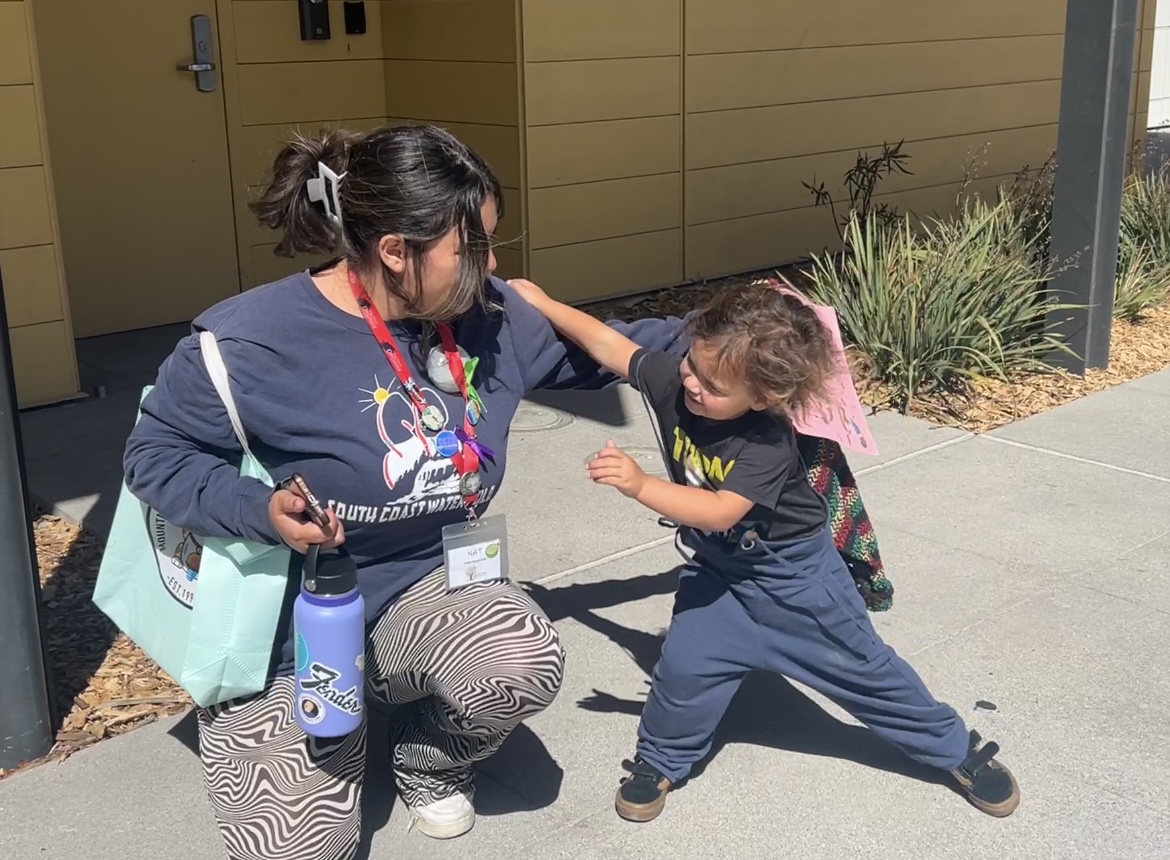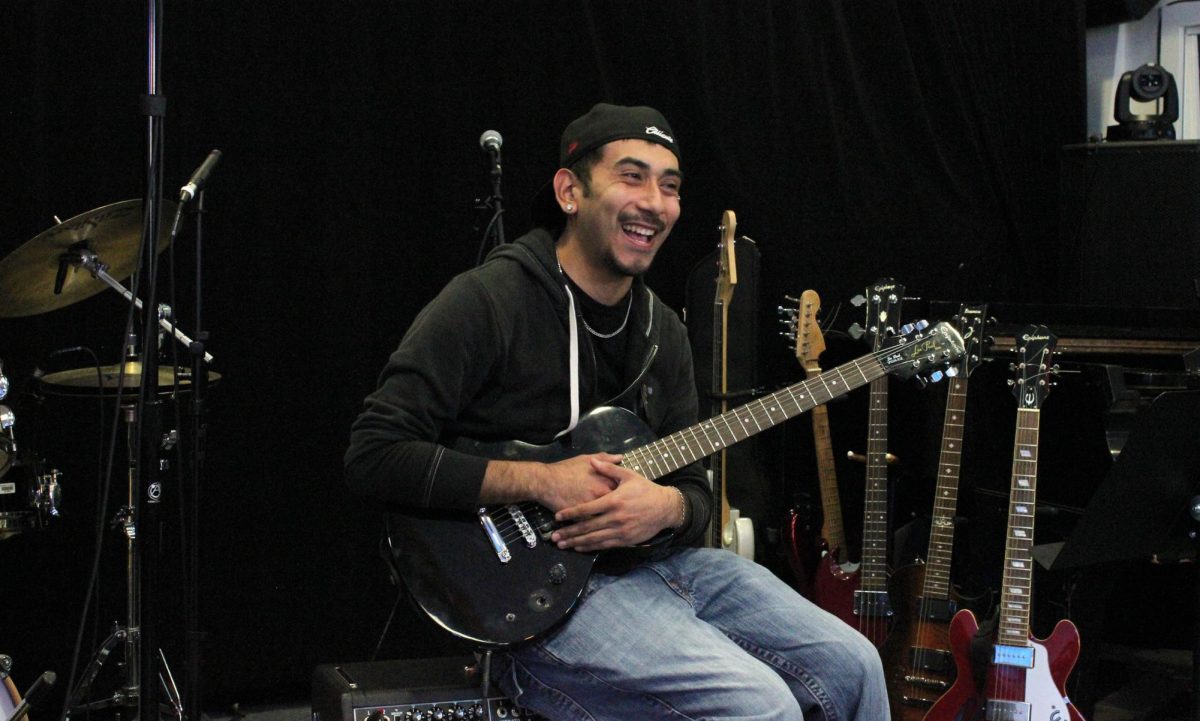Q&A: SDCCD chancellor talks November bond, nursing bachelor’s and free speech
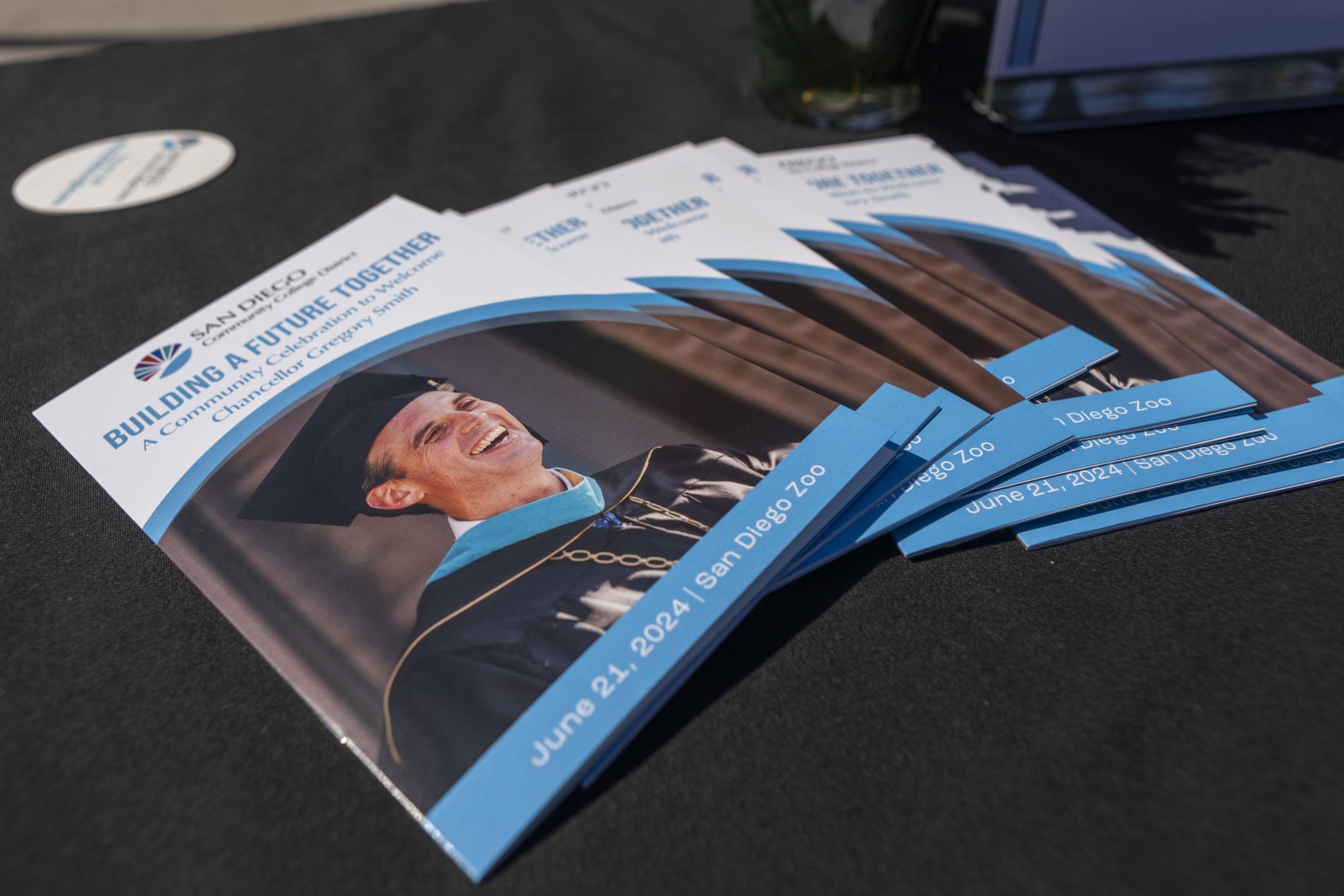
San Diego Community College District Chancellor Greg Smith has had a busy year.
Since stepping into the role last year after the resignation of Carlos Cortez, Smith has overseen the launch of San Diego City College’s first bachelor’s program, the groundbreaking of City’s future student housing and a minimum wage increase for the district’s lowest-paid employees.
Looking back, Smith feels his efforts are paying off.
“We have, once again, significant enrollment growth this semester,” Smith said. “This will be three consecutive years of enrollment growth, which in part tells me people are seeing the value in what we’re doing here and what it can do for them personally.”
Smith sat down with City Times earlier this month to talk about the district’s strategic plan, the SDCCD bond measure on the November ballot and what students can expect in the future.
This interview has been edited and condensed for brevity and clarity.
Can’t see this video? Click here.
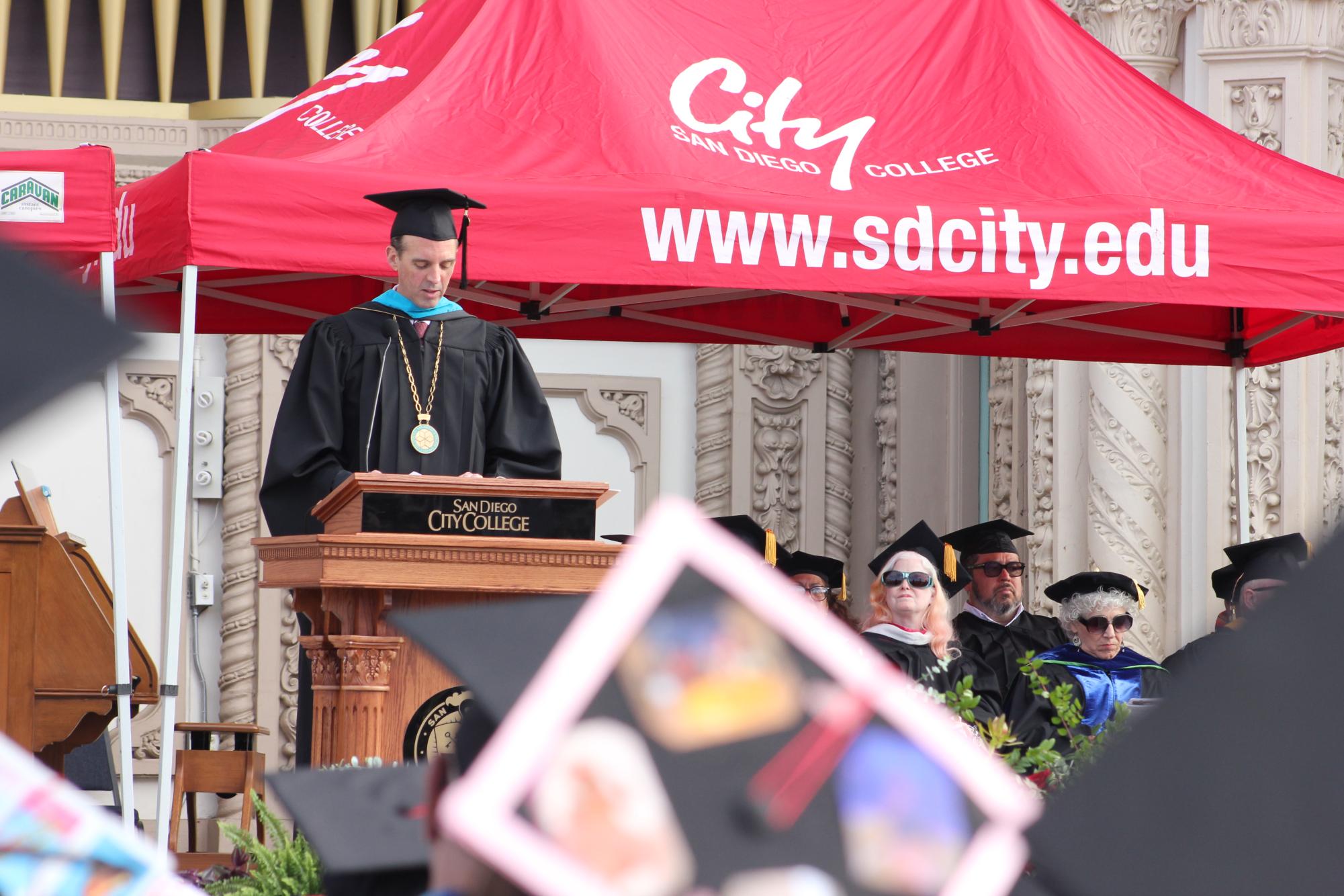
A: “For thousands of people, this is the moment that they made a decision to invest in their education that is going to lead to some tremendous places. Here at City College, we have a graduate who went to outer space. At the College of Continuing Education, one of our former culinary students is the lead pastry chef at the highest-rated Michelin restaurant in the entire West Coast, up in the northern part of the city. You can do extraordinary things. It takes that courage, optimism and commitment, and today that’s what’s happening these first couple weeks of the semester: the students showing up and making that investment in themselves.”
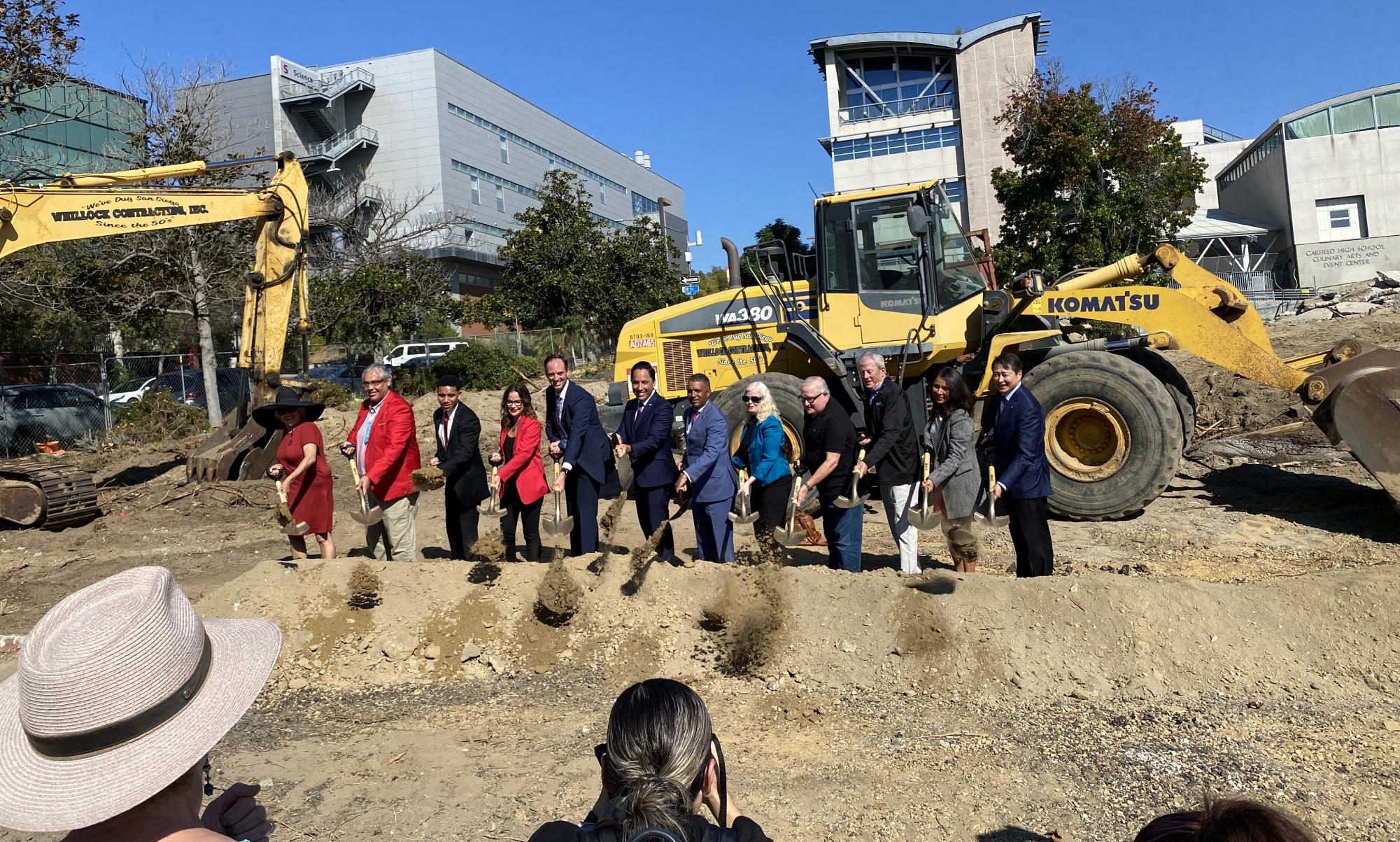
“The most important thing in terms of long-term impact is our board of trustees have placed a bond measure on the ballot, measure HH, which would bring about a $3.5 billion investment over the next 30 years into the infrastructure of our campuses. City College is welcoming its first cohort of cybersecurity baccalaureate students. That bond would help us build out permanent facilities, larger facilities, bring the technology to train them there.”
“We have a number of aging buildings on this campus. Some of our physical education, kinesiology and athletic fields are 60 years old and those need to be replaced or significantly upgraded.”
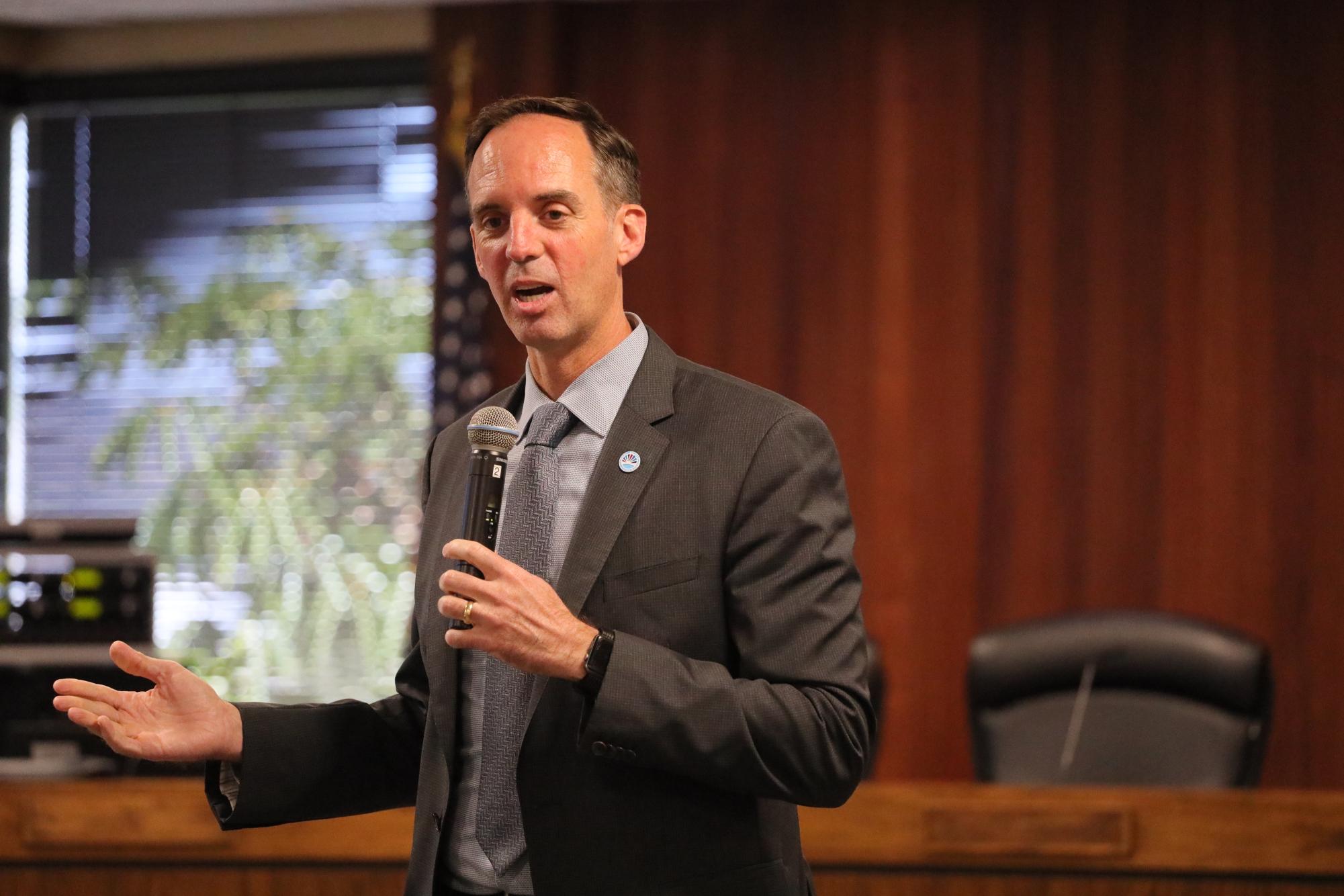
“There’s also making sure that the training we’re providing is on the equipment in the conditions that employers need. So how do we show that we’re still responsive to the evolving needs of our region? The Saville Theatre. It’s very old. You look at tourism in San Diego, events that are using some really incredible technology. Virtual reality projections, with the lighting and sound and software programming that goes into working at the San Diego Convention Center looks a lot different than it did 20 years ago. In terms of training, we need facilities that bring those skills into our theater arts and related programs. So ensuring that people understand what that bond program would mean and the impact it would have on our campus is important. Hopeful that our community will support it and, come the November election, we’ll be bringing that investment in.”
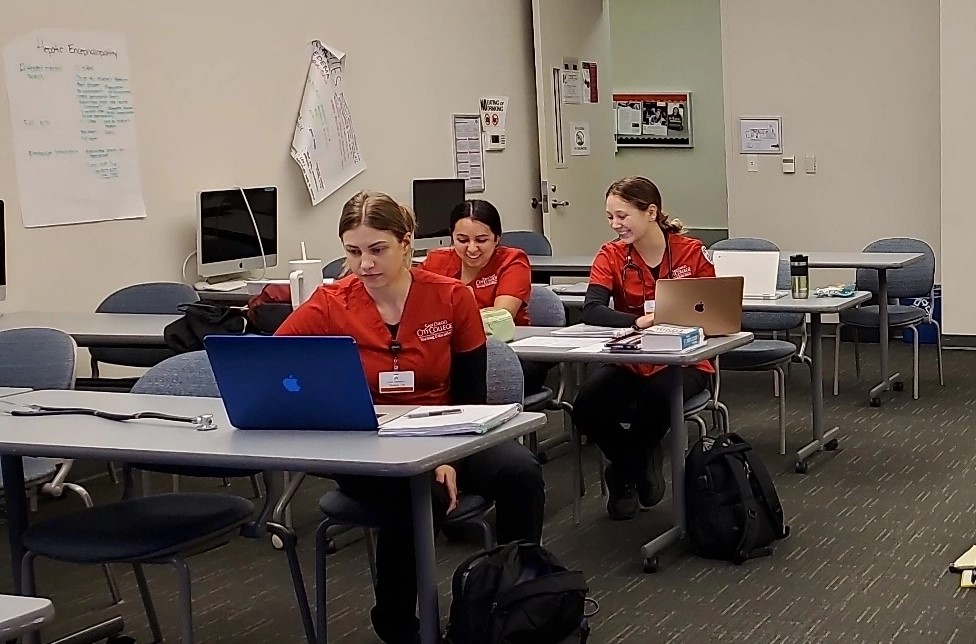
“And then, right now there are a series of legislative bills sitting on Governor (Gavin) Newsom’s desk, and one of the most important ones to us is Senate Bill 895, which would authorize us to offer a bachelor’s degree in nursing. City College’s associate’s degree in nursing program has the No. 2 highest pass rate on the (licensure) exams to become an RN in the state of California, No. 3 in the nation, a highly competitive program that we’re very confident, if that bill passes, we can bring a bachelor’s degree.”
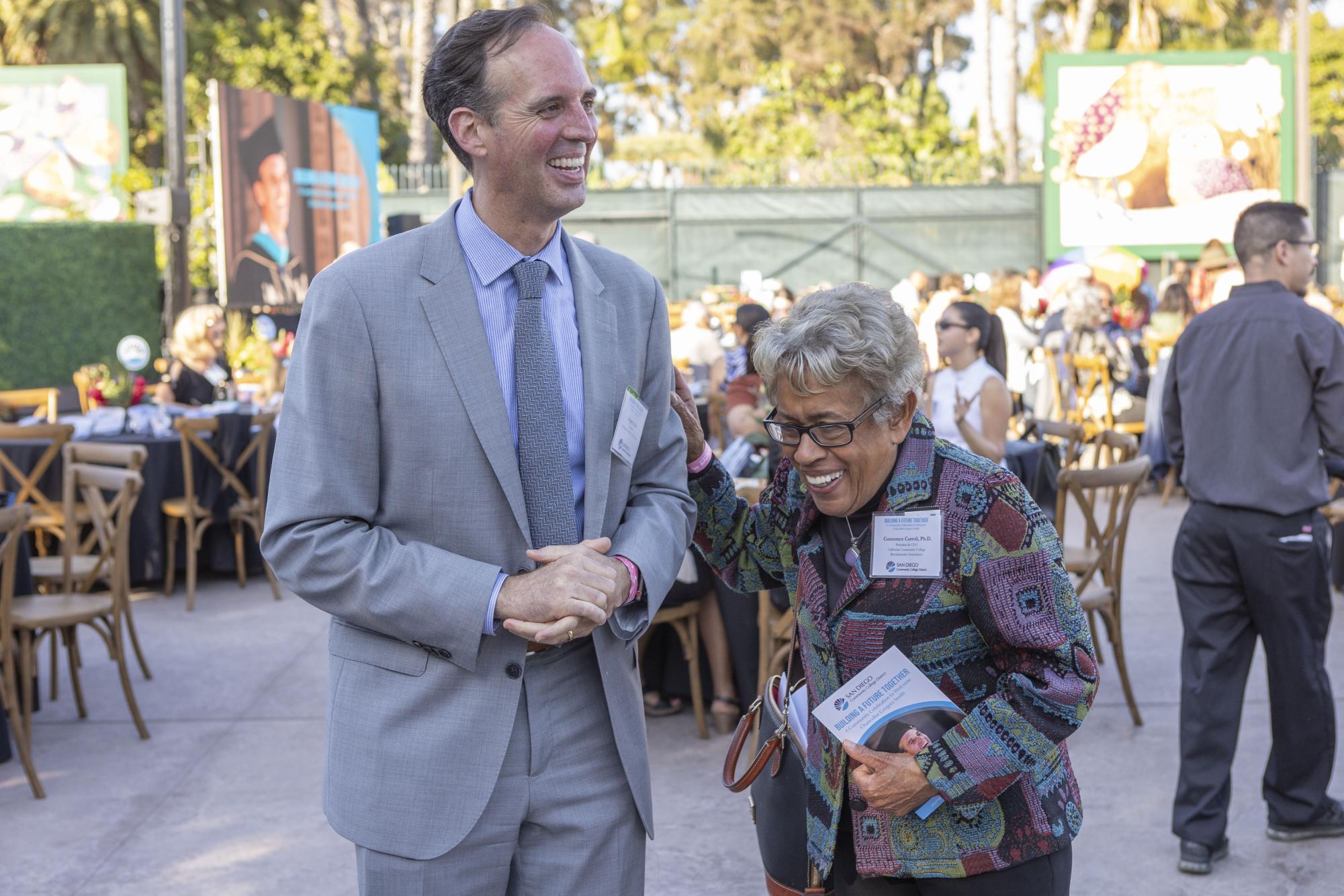
A: “Our strategic plan is built around six key objective areas. First and foremost are the student success outcomes, and that kind of goes into two primary categories. One are the academic programs we offer, the integrity, the responsiveness to local workforce need, and the other side is student support.”
“There’s a lot of work to raise funds to cover the cost of tuition through the San Diego Promise Program. A lot of our faculty are working to do zero textbook cost and open educational resources. … Looking at expanding our Basic Needs (Center). City College has done a lot of work since reopening from the pandemic to do that and reimagining what that space looks like. Have you been over to the barbershop yet? Just an incredible way of thinking about: how do we connect people in a space that’s culturally relevant, where we can talk about financial aid and basic needs support and have it feel very different.”
“We have a goal around our financial health, and this has been a really important part of our work the last four years. The district has a very strong financial position now compared to where we were four years ago. … You’ve probably seen the headlines: $70 billion shortfall, which immediately makes all of us nervous. ‘Are you going to cut our funding?’ … With a healthy reserve, if (the state has) to cut our funding, we don’t have to immediately do that. … So we have an effort underway to significantly increase our fundraising, and my vision on this is that we build an endowment large enough to stop charging students for anything, no parking fee, no student health fee, no tuitions, no books and materials. … So the strategic plan kind of helps us organize our thinking around that and how we go out and pursue it.”
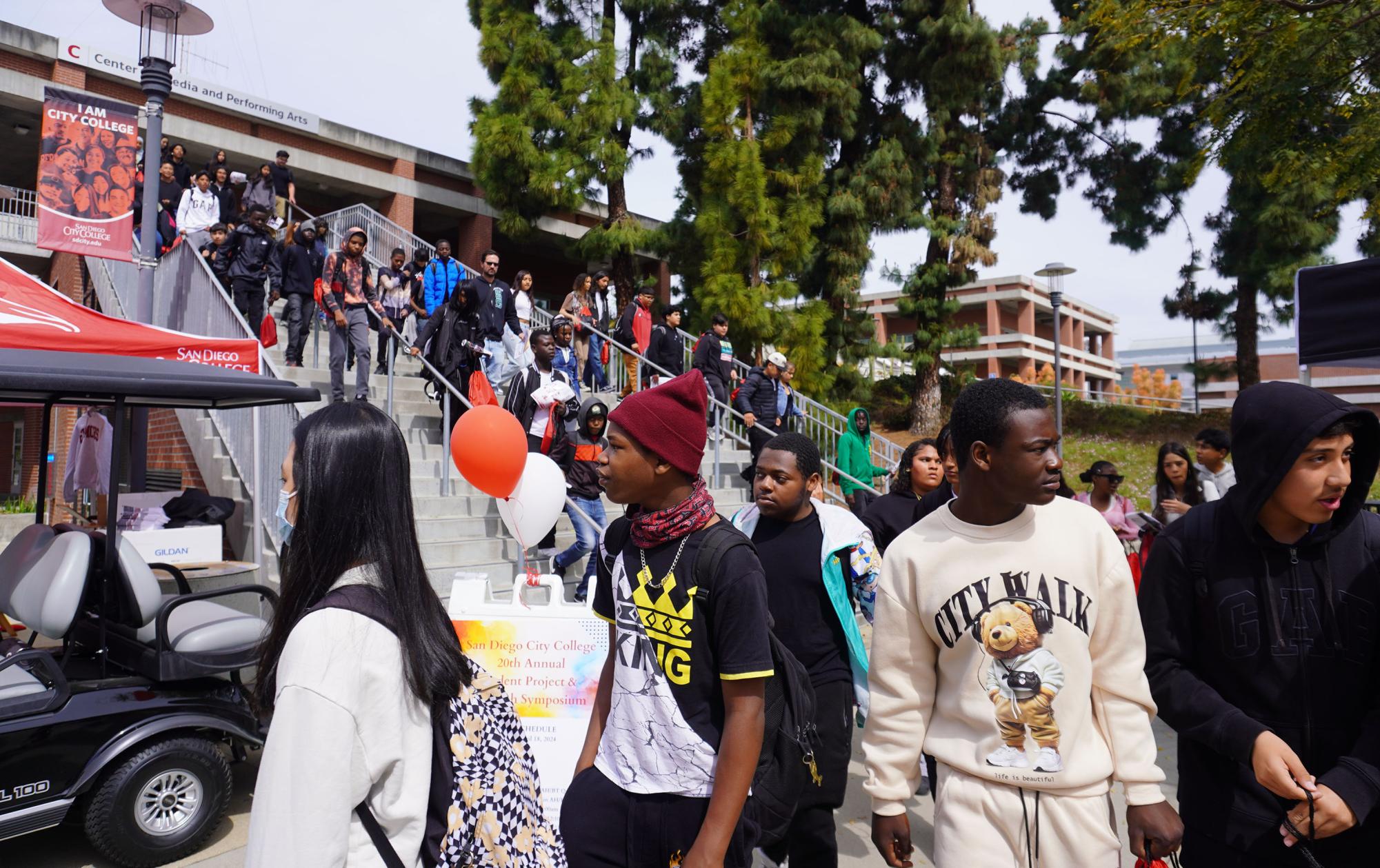
A: “In 2019 right before I arrived, the district’s reserves, or basically our ending fund balance of the year, was about 2.5% of our total annual expenses, and what few different organizations have evaluated and said is a healthy financial level of reserves is about two months or 16.67%, so that’s how far below we were. And there is a state requirement that we have a 5% reserve.”
“So that reserve is our stability factor. … We’ll be reviewing our budget for the 24-25 year. It’s over 17%, so we have restored up to a little in excess of what the experts tell us is a healthy reserve. So that means that as the state goes through these economic fluctuations, we don’t have to make knee-jerk reactions.”
“At the statewide level, the bad news is revenues are down and depending on if you look at the governor’s office or the legislative analyst’s office, that number has ranged between $20 billion and $70 billion in fewer tax revenues than what they had projected when they built the budget. The good news in all of that is the budget that the legislature brought forward, the governor signed, did not cut K-12 and community college funding.”
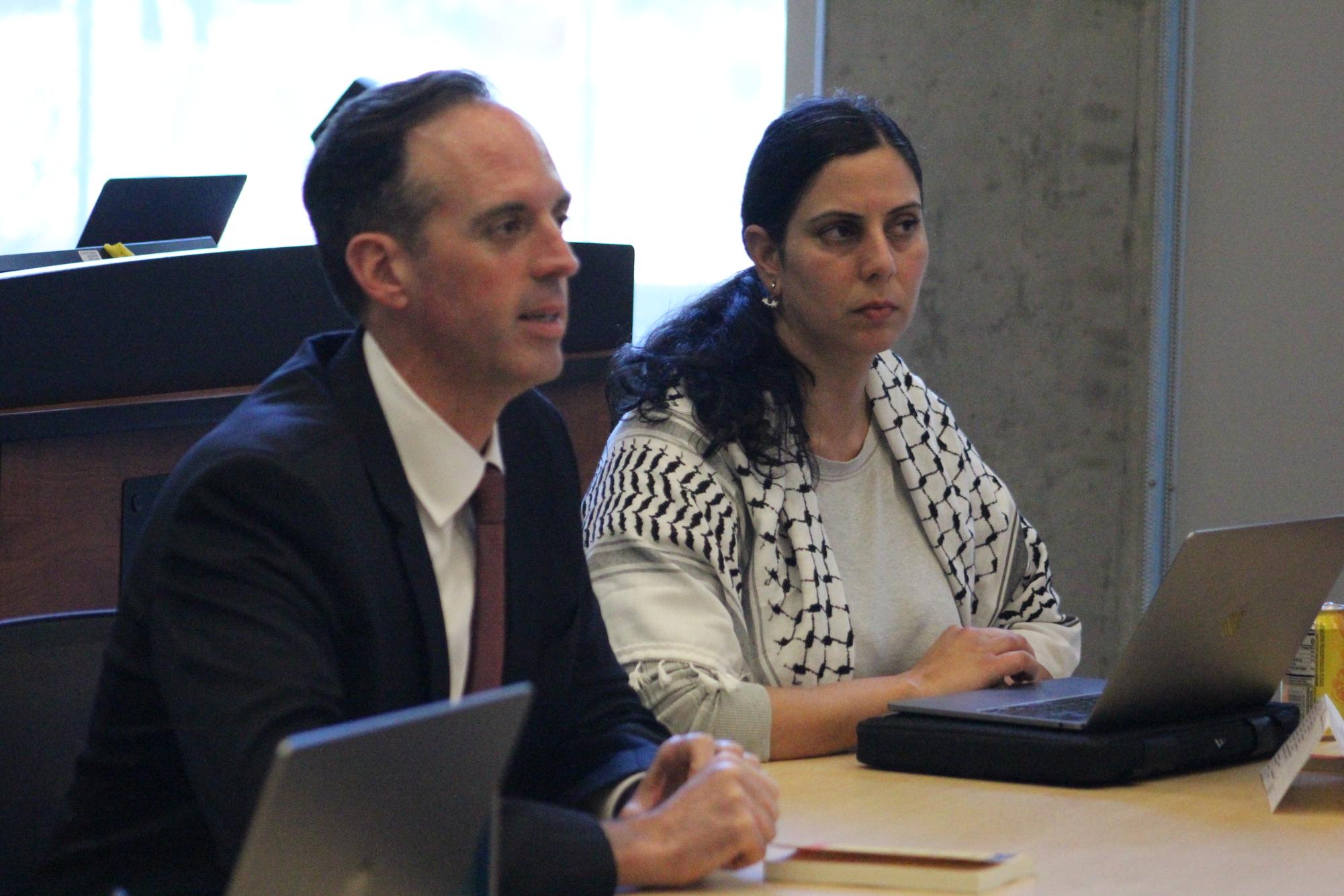
A: “I don’t think I would. The goal in that, as I said there, was to make sure that people had space to discuss, express different viewpoints in a way that’s civil, in a way that’s respectful, and as long as that’s the tone of the conversation, then I think this is us fulfilling our mission that each student has an opportunity to come in and engage.”
“The decision point that came from that was around one particular phrase, ‘from the river to the sea’ that has turned into a slogan. And I very much understand those who say, ‘this is a slogan. I am advocating for a Palestinian state, for freedom to self-determination.’ … But we have another group saying, ‘as soon as you say that you are invoking this history that I understand to be a call for genocide or violent removal.’ And so we have to navigate that tension.”
“It’s a delicate balance to find that. … I think making a clear distinction this language violates our policy when used in this context … I think was the right way to handle it.”
Your donation will support the student journalists of San Diego City College. Your contribution will allow us to purchase equipment, cover the cost of training and travel to conferences, and fund student scholarships. Credit card donations are not tax deductible. Instead, those donations must be made by check. Please contact adviser Nicole Vargas for more information at nvargas@sdccd.edu.






